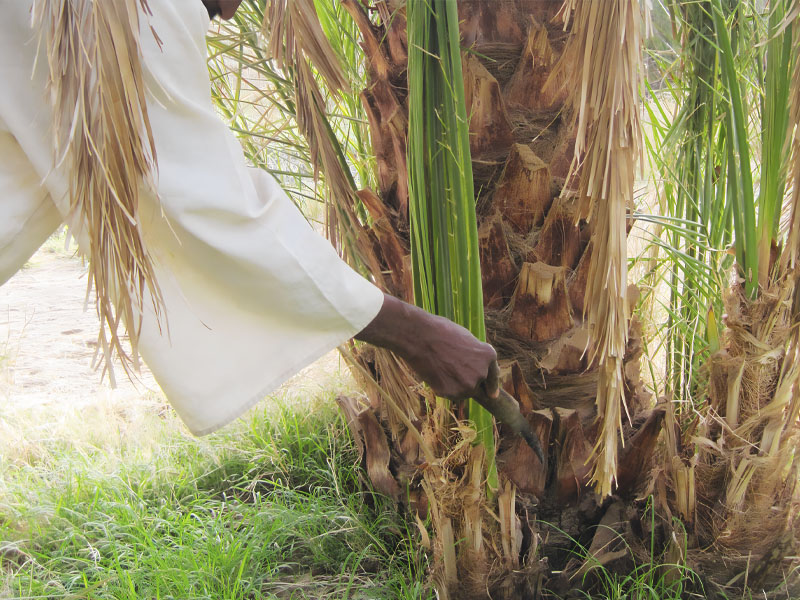Traditional knowledge and techniques of palm cultivation in Marwi, Northern Sudan
Issue 40

By Dr. Asaad Abdul Rahman Awadallah, Sudan
This study describes the environmentally friendly traditional techniques that the Marwi people use in palm cultivation. For example, in order to protect the soil, people do not use chemical fertilisers or machines such as modern tractors.
Farmers in Marwi excel at their craft. They plant seedlings that produce dates like the ones from the source palm tree using traditional farming tools. They separate the seedling from the palm using a crowbar, dig a hole using a hoe, and plant the seedling with the excavated soil to maintain the roots’ wetness. They use organic manure as fertilizer and then water the seedling. This process does not harm the environment.
They also use traditional techniques to harvest the dates, namely their hands and a sickle. They preserve the dates by arranging them so that they are exposed to the air and by drying them in the sun.
If we look at the palm tree and the traditional techniques associated with its cultivation in this region, we find that it reflects the environmental conditions, because the palm trees are affected by the environment and by the techniques used in their cultivation. Palm trees only bear dates in a desert climate with high temperatures, low humidity, and no rain, and this climate is prevalent in Marwi.
Planting palm trees is the most important agricultural work in Marwi, because the dates are a source of income. These trees are cultivated in Marwi, but also all along the Nile in the deserts of northern Sudan. People in Marwi use the palm tree to meet their needs, and they have invented several ways to do so. As a result, they have shaped their culture over time, which is reflected in the traditional knowledge and techniques they use to grow palm trees.







































































